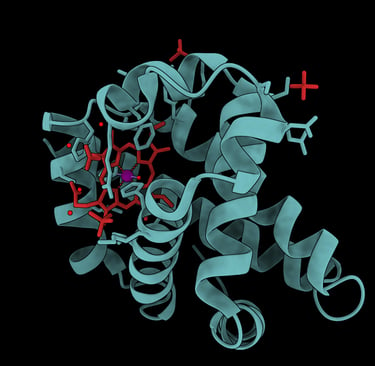Proteins: everyone talks about them, but few know what they really look like


No, this isn’t another article about proteins as nutrients. Between dietary myths, “fortified” products, and fleeting wellness trends, they’re everywhere.
But how many people could actually describe what a protein looks like?
Complex and remarkably versatile, proteins play a central role in virtually every biological process. Observing them up close means understanding how they work — and why they are the molecular machines that made life as we know it possible.
Amino acids: the building blocks of proteins
All proteins originate from twenty amino acids, small molecules that the cell assembles into longer and longer chains through bonds known as peptide bonds.
The order in which these amino acids are arranged is not random: it is written in our DNA, within the genes stored inside the nucleus of each cell.
During protein synthesis, the cell reads these genetic instructions and builds the corresponding amino acid chain. From that point on, the chain folds in on itself, following the laws of thermodynamics, until it forms a well-defined three-dimensional structure.
It is precisely this shape that determines the protein’s function.
An enzyme, for example, must have a cavity perfectly shaped to accommodate the molecule it acts upon; an antibody must recognize the contour of its target among countless others.
When, for any reason, this folding process goes awry, the protein loses its function and, depending on its role, serious diseases can arise.
Structure and function: two sides of the same coin
Scientists classify proteins according to their shape (globular or fibrous), chemical composition, or function.
Among the main categories are:
Enzymes, which accelerate chemical reactions that would otherwise be far too slow to sustain life.
Structural proteins, such as collagen and keratin, which give tissues and organs strength and shape.
Transport proteins, such as ion channels that regulate the passage of ions — essential, for instance, for nerve impulse transmission, the release of hormones like insulin, or muscle contraction.
Hormones and receptors, which coordinate communication between cells.
Contractile proteins, responsible for movement.
Storage proteins, which stockpile molecules or substances for later use.
Defensive proteins, such as antibodies, which recognize and neutralize pathogens.
Despite their enormous variety, all share a fundamental principle: function depends strictly on form.
It makes sense, doesn’t it? Think of Formula 1 cars — their low, aerodynamic design isn’t aesthetic, it’s functional.
Seeing proteins up close
Modern techniques for visualizing proteins range from X-ray crystallography and nuclear magnetic resonance to cryo-electron microscopy and predictive models powered by artificial intelligence.
And yes, these methods are every bit as complex as their names suggest.
The branch of biology devoted to studying the shape of proteins and other molecules essential to life is known as structural biology.
When the three-dimensional structure of a protein is determined using these methods, it appears as an orderly tangle of ribbons, spirals, and arrows.
The spirals correspond to alpha helices, while the arrows represent beta sheets.
These two structural motifs form the fundamental framework of proteins and are connected by more flexible regions known as loops.
Alpha helices resemble tightly coiled springs — compact and stable — whereas beta sheets are like flat folds held together by hydrogen bonds.
The alternation of these elements, and the way they arrange themselves in space, gives each protein its unique shape and, as a result, its specific function.
Proteins are dynamic structures, constantly in motion, and only a few billionths of a meter in size. Despite extraordinary technological progress, studying them remains a formidable challenge.
Determining a protein’s structure with atomic precision means understanding its function — and often, how to intervene when something goes wrong.
This knowledge underpins the design of targeted drugs, capable of binding only to their intended protein, minimizing side effects while increasing therapeutic efficacy.
But the study of proteins extends well beyond medicine.
It also means designing entirely new molecules: enzymes that can break down plastic, biological catalysts for producing biofuels, synthetic antibodies engineered to recognize cancer mutations, and much more.
Proteins are far more than a dietary buzzword.
Studying how they form and function means uncovering the very principles that make life possible.
BIBLIOGRAPHY
I principi di biochimica di Lehninger, David L. Nelson, Michael M. Cox, Zanichelli.
IMAGE
Three-dimensional structure of Myoglobin (PDB ID: 3RGK, visualized with ChimeraX).
Myoglobin functions as an oxygen reservoir in tissues such as skeletal and cardiac muscle. Thanks to the presence of iron (highlighted in purple in the image) within the heme group (in red), it can reversibly bind the oxygen we breathe — with an affinity higher than that of hemoglobin.
